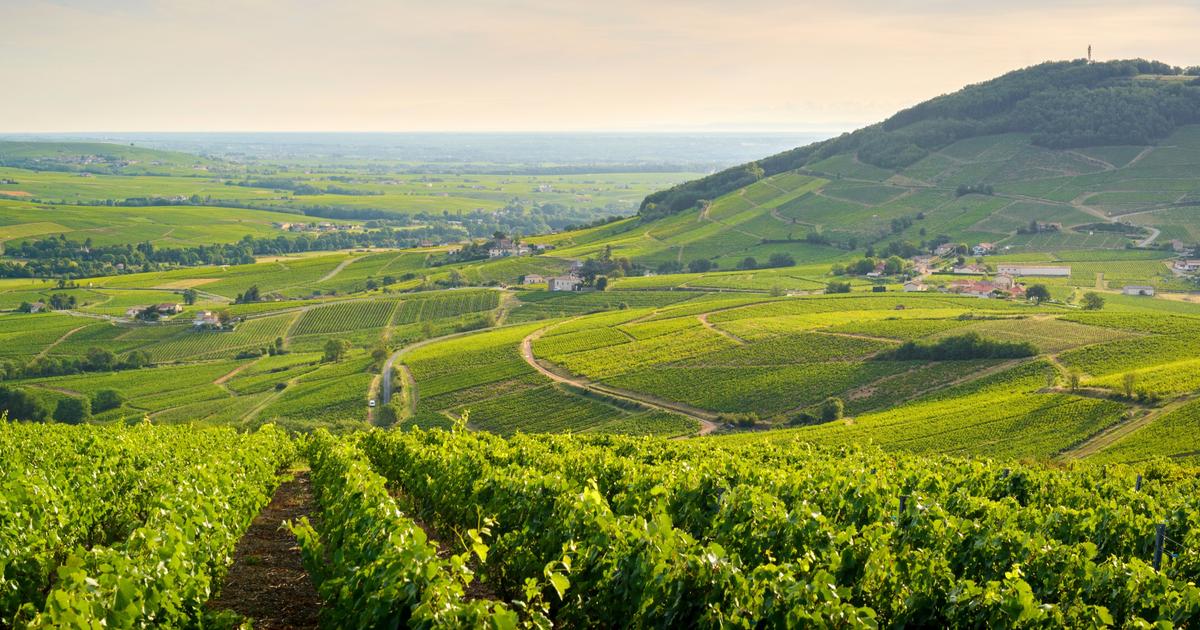Le Figaro Lyon
A strange cocktail floats between the leafy vines that stretch over the hillsides of the Beaujolais crus.
A new study carried out by the association for the fight against pesticides Générations futures, and spotted by
Le Progrès
, confirms the presence of residues of phytosanitary products in the air of the vineyard.
Around twenty pesticides have been identified by a specialized laboratory.
With the clarification this time that the legal distance of five meters between vines and buildings is not enough for these substances to dissipate.
“This future generation campaign shows that the non-treatment zones (ZNA) are not sufficient
,
” says
Mathieu Chastagnol, member of the We want Beaujolais poppies association who participated in the study.
We want to take it to 150 meters
.
The device put in place between last May and July, during the treatment period, was made up of
“passive sensors”
.
Stainless steel bells, positioned on a stake 1.5 meters from the ground.
Inside, a foam absorbs particles.
It is then sent to the laboratory for research into around a hundred substances.
Four sensors had been positioned on the outskirts of a virgin plot surrounded by vines.
A fifth was in the middle of the plot, 70 meters from the first vines.
“The central sensor comes in second place among those which captured the most pesticides
,” concludes Mathieu Chastagnol.
A final sensor, located in Villefranche-sur-Saône, to measure the “background noise” in the city, captured 14 times less pesticides.
The study was also carried out in the North, where traces of glyphosate were found in quantity, and the Bordeaux vineyards.
In the Rhône it is folpel, a fungicide, which is most present.
It makes it possible to treat fungi such as powdery mildew or downy mildew which make the vines sick.
“A bomb in the making”
An Inserm report on 5,300 scientific studies concluded in 2021 that there was a presumption of a strong link between exposure to phytosanitary products and the development of blood cancer, prostate cancer, leukemia in children or even kidney disease. Parkinson's.
The first affected being farmers, who are more exposed, as well as pregnant women and children.
Mathieu Chastagnol says he is particularly worried about the latter.
Due to the particular topography of the Beaujolais vineyards, with its villages surrounded by vineyards, and the immediate proximity of schools in particular.
“It’s a real health problem, a bomb in the making”
, continues the one who has identified
“around thirty schools at risk”
.
Tempering both the method of the study and the census of these establishments, Jérémy Thien, vice-president in charge of agriculture at the community of communes recognizes the need to work on this subject.
“In reality, a large contingent of these thirty schools has already been treated, vines have been removed, some have gone organic
,” he assures Le
Figaro.
We can consider going up to 15 meters, but 150 is inconceivable and not scientifically relevant.”
Mathieu Chastagnol deplores the absence of mapping of cancer clusters, even though wine growers are primarily concerned.
“The subject can be explosive but informants must be listened to, not like with
asbestos ,
”
he says.
“We need to put in place a guide to good practices between professionals and local elected officials, especially since we are in a period of review of the Scot
(territorial coherence scheme, Editor's note)
and the Plu-H
(local urban planning and of habitat, Editor’s note), agrees Jérémy Thien.
The profession has already made a lot of progress in organic, HVE
(High Environmental Value, Editor's note)
and even conventional winegrowers have reasoned practices.
Sometimes, it’s simply warning the neighbor that we’re going to treat them so that they close their windows
. ”
Insufficient for environmental activists who now plan to alert parents.

